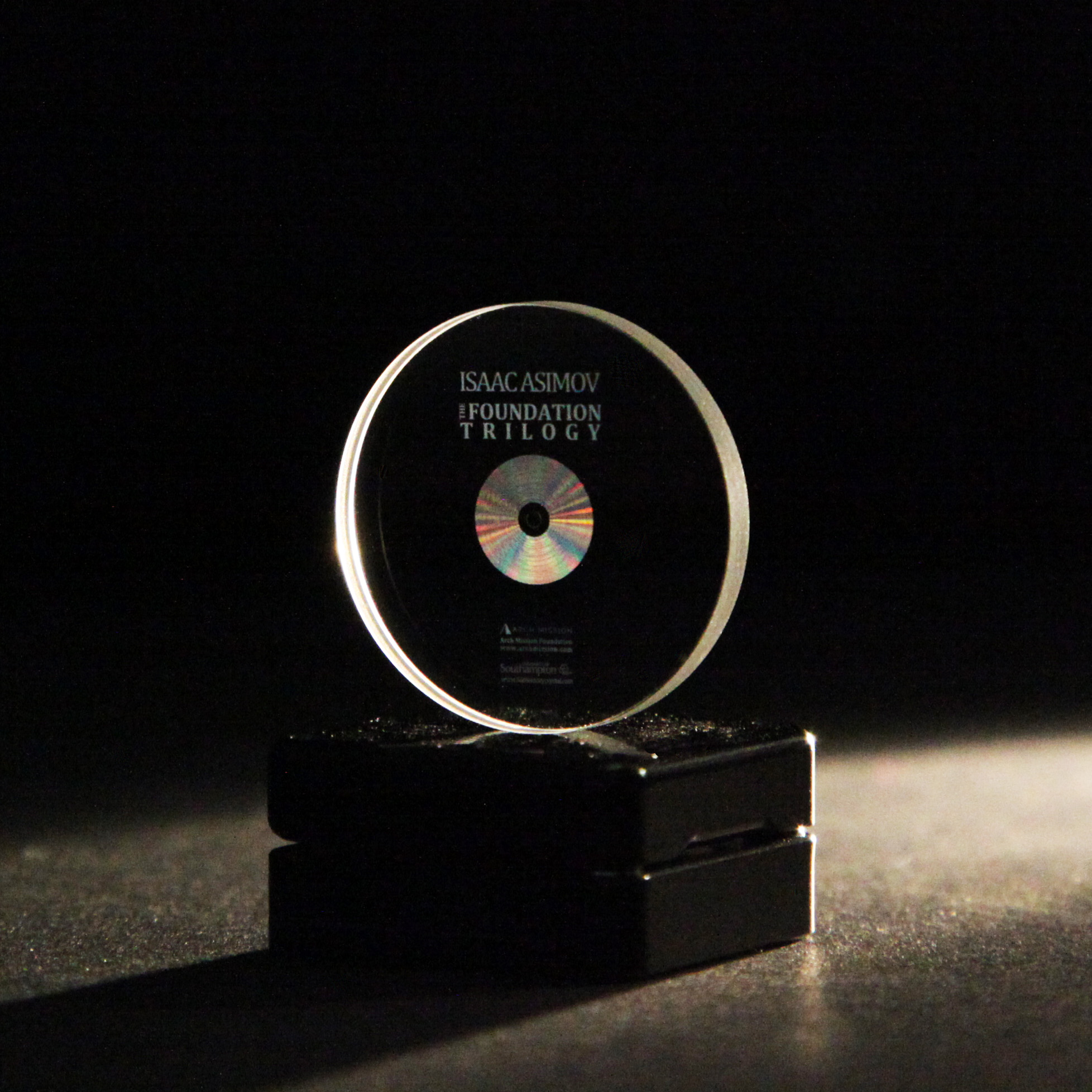When an English Lit Major Tried to School Isaac Asimov

Celebrated science fiction author Isaac Asimov is as legendary as the stories he crafted. His numerous books sparkled with riveting characters, engrossing worlds, and thought-provoking themes, crafted from the raw ingredients of intellect and experience, and welded together with immense dedication. This dedication extended beyond his books and biochemistry lessons (Asimov was a professor at Boston University) to the great many people who reached out to him in some fashion.
"My estimate is that Isaac received about 100,000 letters in his professional career," his brother Stanley wrote in 1996. "And with the compulsiveness that has to be a character trait of a writer of almost 500 books, he answered 90 percent of them."
One of these correspondences was with a self-described "English Lit major" who challenged what he perceived as Asimov's intellectualy superior ignorance for expressing "a certain gladness at living in a century in which we finally got the basis of the universe straight."
The young specialist in English Lit, having quoted me, went on to lecture me severely on the fact that in every century people have thought they understood the universe at last, and in every century they were proved to be wrong. It follows that the one thing we can say about our modern "knowledge" is that it is wrong. The young man then quoted with approval what Socrates had said on learning that the Delphic oracle had proclaimed him the wisest man in Greece. "If I am the wisest man," said Socrates, "it is because I alone know that I know nothing." The implication was that I was very foolish because I was under the impression I knew a great deal.
Asimov recounted his reply to the English Lit major in an essay published to The Skeptical Inquirer in fall of 1989.
My answer to him was, "John, when people thought the earth was flat, they were wrong. When people thought the earth was spherical, they were wrong. But if you think that thinking the earth is spherical is just as wrong as thinking the earth is flat, then your view is wronger than both of them put together."
You see, knowledge, in Asimov's view, is not relegated to the black and white world of right or wrong, it is ever-evolving from one stage of wrongness to another. Ideally, knowledge advances by moving from wrong, to less wrong, to even less wrong, and so on and so forth.
He elucidated his point with the example of Flat Earth theory. Thousands of years ago, many considered the world to be flat, a patently ridiculous observation by modern standards, but not unreasonable back then. After all, Earth's surface curves a mere eight inches per mile, so it's tough to fault our forebears for missing this discrepancy with their limited measuring tools.
Later on, learned figures like Aristotle reasoned that Earth was a sphere. Asimov described their observations.
Get the Space.com Newsletter
Breaking space news, the latest updates on rocket launches, skywatching events and more!
First, certain stars disappeared beyond the Southern Hemisphere as one traveled north, and beyond the Northern Hemisphere as one traveled south. Second, the earth's shadow on the moon during a lunar eclipse was always the arc of a circle. Third, here on the earth itself, ships disappeared beyond the horizon hull-first in whatever direction they were traveling.
But guess what? They were wrong, too! The Earth is not a perfect sphere.
"Isaac Newton first proposed that Earth was not perfectly round," Charles Choi wrote for Scientific American. "Instead, he suggested it was an oblate spheroid—a sphere that is squashed at its poles and swollen at the equator. He was correct and, because of this bulge, the distance from Earth's center to sea level is roughly 21 kilometers (13 miles) greater at the equator than at the poles."
Nice job, Newton! But sorry, you're technically wrong, too! We now know that Earth isn't just oblate at the equator; it's actually a bumpy, shifting, sphere-shaped mass, uneven and occasionally off-kilter, and this is just the least wrong description so far. But still, we are far closer to being right than when we started! This is how science-based knowledge advances!
"Once scientists get hold of a good concept they gradually refine and extend it with greater and greater subtlety as their instruments of measurement improve. Theories are not so much wrong as incomplete," Asimov wrote.
In short, my English Lit friend, living in a mental world of absolute rights and wrongs, may be imagining that because all theories are wrong, the earth may be thought spherical now, but cubical next century, and a hollow icosahedron the next, and a doughnut shape the one after.
But we cannot choose what is truth. We can, however, choose to be less wrong.
Originally published on RealClearScience.
Join our Space Forums to keep talking space on the latest missions, night sky and more! And if you have a news tip, correction or comment, let us know at: community@space.com.
Steven Ross Pomeroy studied zoology and conservation biology, but has long had a passion for journalism and writing. His work as writer and editor appears at RealClearScience’s website, where he covers anything that sparks his curiosity and love of learning. More of his writing can be found at Big Think, Slate, Science Now, Gizmodo, and Scientific American.










